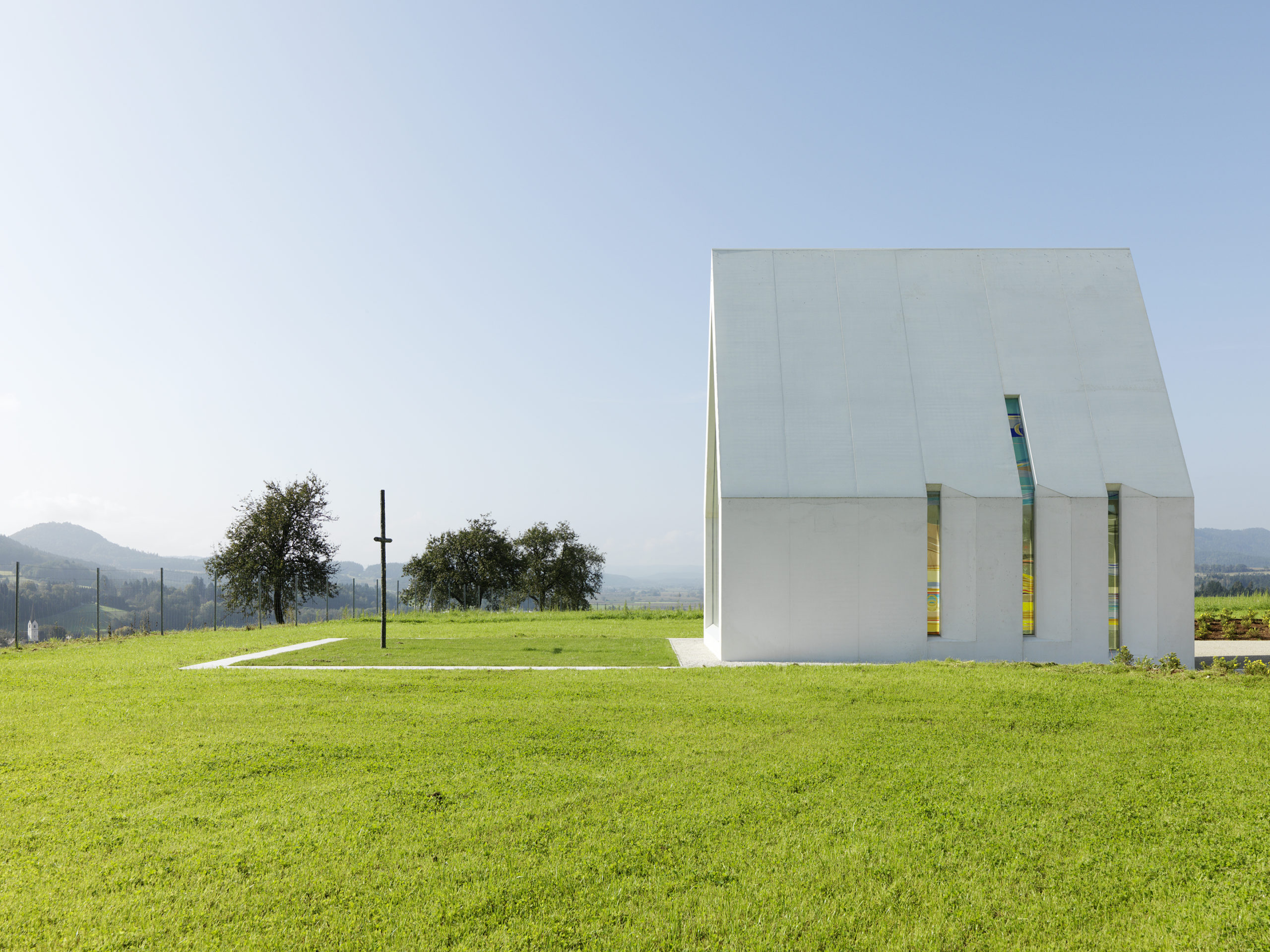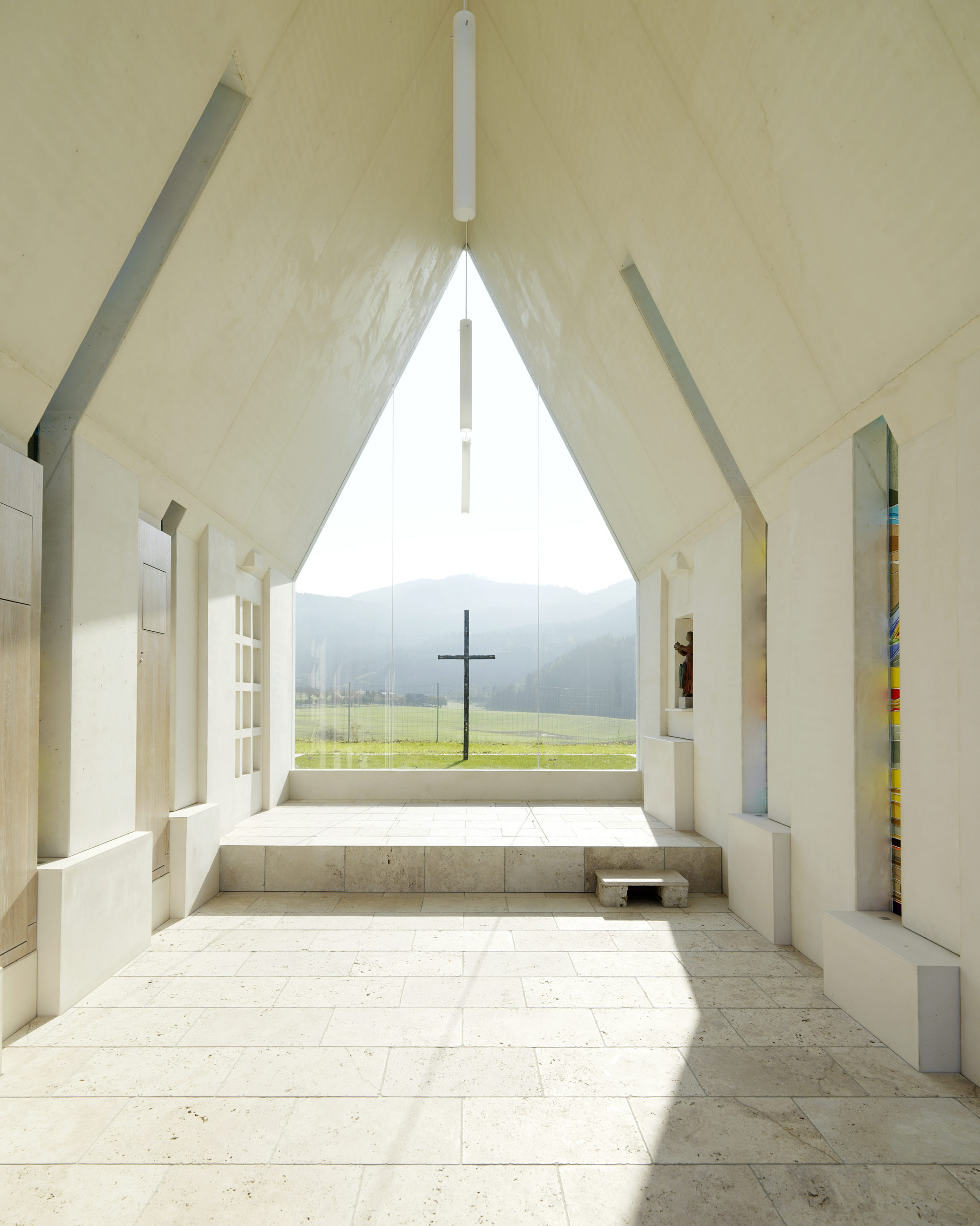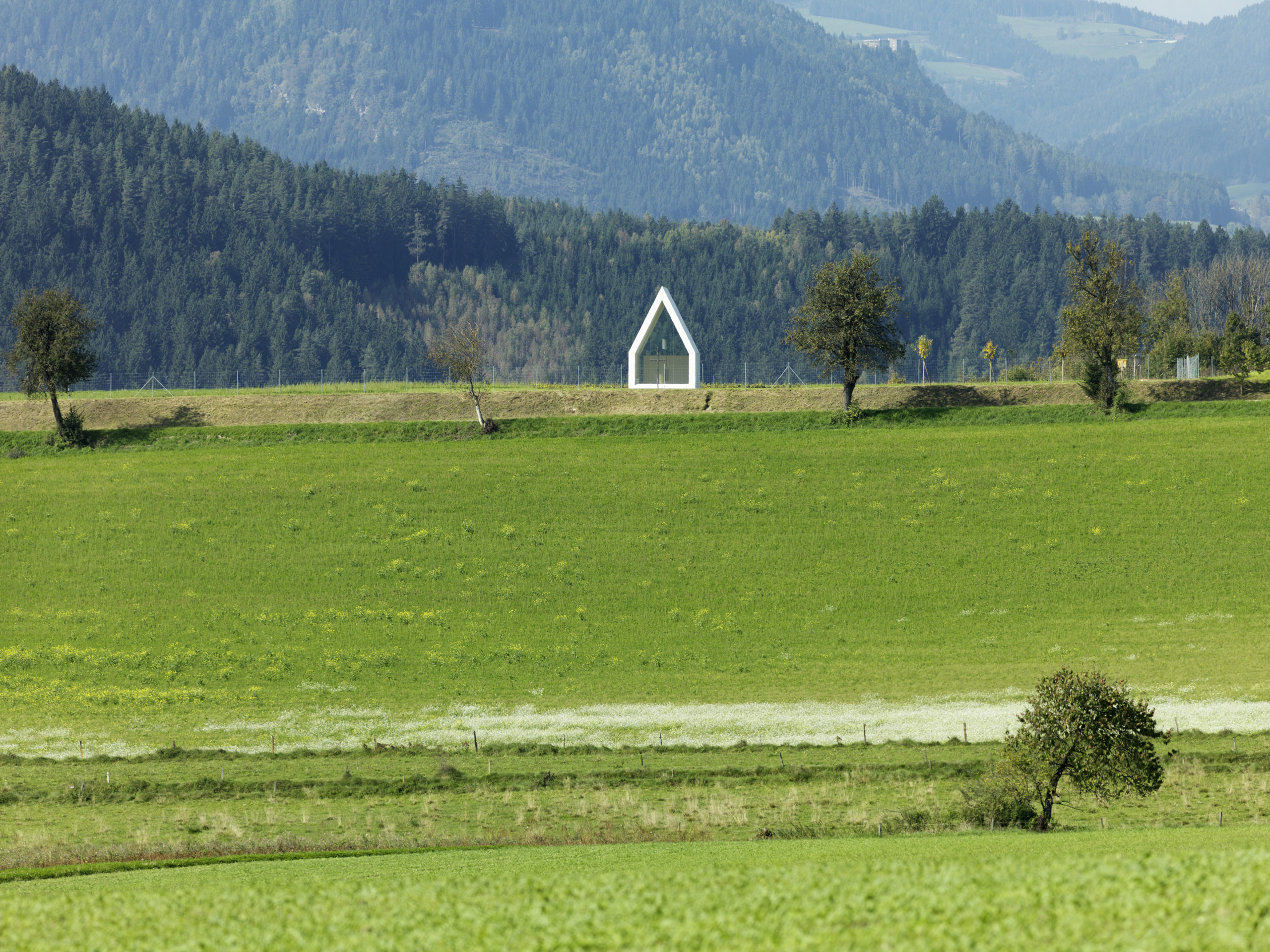Architects: Want to have your project featured? Showcase your work by uploading projects to Architizer and sign up for our inspirational newsletters.
Religious buildings are spaces designed to create separation from the busy outside world, and help visitors find inner peace. Gothic cathedrals buffer chaos from the outside world with stone walls that block the noise and stained glass that filter light, transforming the interior into an other-worldly space. Meanwhile, Buddhist temples are specifically sited to ensure their separation of the spiritual spaces and the surrounding urban plazas and streets.
Yet, what happens when the site itself is a calm place that promotes spiritual connection, and how can architects and design elevate that peacefulness without disrupting the natural serenity? The following collection consists of religious buildings that are situated in scenic landscapes — places where the process of travelling to the site is already a form of religious refreshment. Some are hidden in woods, and others on unsheltered plains, but they all utilize the environmental advantage to create real sanctuaries that calm the soul.


This sculptural structure, made of white concrete, is a private chapel for family activities. With its back façade fully glazed, the chapel provides a borderless view of the Magdalensberg hill in the distance, as well as the tranquil landscape between the site and the mountains.
The space inherits the feeling of openness from the landscape while remaining sheltered and intimate. White concrete and lighting stand out on the remote site, yet its neat form and clean finishing make it a decorative piece of the landscape, ensuring that the natural beauty remains undisturbed.
Jetavana Buddhist Temple is a place for believers to practice asceticism through which they identify their inner suffering and eliminate it. The temple is finished with brick and concrete structures. While it features a modern looking form, the overall layout of the site still aligns with that of traditional temples. The interior contains an office, accommodations for monks, and short-stay accommodation for believers coming for asceticism and the Buddhist sanctuary. These functions are consciously placed in relation to one another according to their religious significance.
Nascimento Chapel is a private chapel located in the mountains of Rio de Janeiro. The unique topography of the site facilitates the creation of an artificial pond that reflects the chapel. Instead of solid walls, twenty-five steel frames of varying sizes warp around the glazed chapel space. These steel frames not only function as brise-soleil but also provide a sense of intimacy and privacy while letting the space remains connected to the scenic landscape around it. When viewing from the front, the steel frames form an illusionary perspective that guides you in.
Kapelle Salgenreute is a rebuild of an old chapel on the site, which was completed by over a hundred volunteers. The new chapel’s simplistic shape restores that of the original chapel. The façades are carefully assembled using small pieces of wood, creating a satisfying pattern while responding to the natural surroundings. Inside the chapel, the homogeneous timber finishing calms minds down with its timelessness. Yet the space is not isolated from the real world. At the end of the white apse is the only window of the chapel, which frames the woods outsides. The window becomes a temporal painting that changes with time and weather.
Located on the Pampa plains, the Saint Bernard’s Chapel stands against a grove, with its backyard extending into the grove. The structure reuses the bricks from its precedent, a 100-year-old rural house that used to stand on the site. The semi-circle opening acts as an entrance for sunlight to enter the grove.
Two separate poles are installed on the opening, instead of a complete cross. The pole’s shadows overlap to form a cross when the sun moves to the front of the opening. The process of the cast cross splitting apart and reforming becomes a daily event, producing subtle ephemerality within this solid structure.
This chapel belongs to Sayama Lakeside Cemetery and is open to all religions. Standing at the back of the cemetery, the chapel almost hides into the forest. The timber structure is covered in hand-crafted aluminium tiles. Walls incline inwards to avoid conflicting with tree branches while meeting at the top to become roof structures at the same time. Each pair of walls inclining towards each other are symbolizing the hand gesture of praying, creating a building that prays to nature, where all lives return to at the end.
Joá Chapel sits on a triangular beam system that extends beyond the hillside path, stretching towards the waterscape. The chapel space is sheltered by glass panels and rectangular timber frames. At the end of the triangular floor plan is the cross that takes the sea as a backdrop. The triangular floor plan and the inclining ceiling strategically lead the vista towards the cross. The space is visually prolonged with timber frames emphasizing the perspective.
Architects: Want to have your project featured? Showcase your work by uploading projects to Architizer and sign up for our inspirational newsletters.
